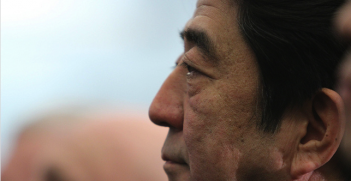What are the Opportunities for China-Australia Cooperation in Building the Belt and Road?

Beijing’s Belt and Road Initiative offers significant opportunities for enhanced economic cooperation between China and Australia, but policymakers in both countries need to ensure that the private sector can participate fully.
The uncertainty resulting from US President Donald Trump’s withdrawal from the Trans-Pacific Partnership and a series of black swan events have challenged global trade and regional stability, calling for the world to review its multilateral mechanisms. China’s newfound position as an influential leader on the modern global stage requires Beijing to channel its leadership towards solving global challenges, supporting developing regions and working closely with developed countries. The Belt and Road Initiative (BRI) can become this channel.
In the past three years, China has successfully and significantly expanded its friendship circle through the BRI, not only with developing countries but also with developed countries. In the past two years of work with the Australia-China Belt and Road Initiative, we have learnt that successful Belt and Road engagement requires a tailored approach that considers each country’s unique political situation and industry demand while linking together each country’s past with the collective present.
In March this year, China held a high-level dialogue with the Australian government on Belt and Road development as part of an existing ‘Comprehensive Strategic Partnership’ between these two great nations. Later that month, the groundbreaking Belt and Road Initiative Cooperation Agreement between China and New Zealand was signed.
Framing the discussion around the BRI pillars—policy coordination, financial integration, connectivity and unimpeded trade—we can see the challenges and opportunities for applying the new cooperation model of developed countries to the Australia-China relationship.
Policy coordination
It is important that China forms country-level cooperation memoranda of understanding (MOUs) with developed Western countries to obtain top-level endorsement and provide needed confidence to business communities, enabling them to engage with the BRI.
The focus on such MOUs should leverage what each nation does best—developed countries like Australia are strong in high-technology research, service industry capability and knowledge sector collaboration. These strengths, both practice- and knowledge-based, can complement the current needs of Belt and Road development.
Australia’s financial services, professional and management consulting services and technical businesses have excellent reputations worldwide and embedded positions in Southeast Asia; they can play an important role in implementing mutually acceptable Belt and Road projects.
At the same time, the scope of policy coordination should not be limited to bilateral collaboration. The Belt and Road’s special value is in multilateral and regional collaboration. For example, Australia is a key leader in the South Pacific region, and collaboration with Australia should consider the interests and needs of countries in this region, particularly by leveraging existing aid programs. Australian companies have a long history of operating in Europe and the US; they can help Chinese businesses to negotiate trade deals and operate in English-speaking countries.
Financial integration
Although new funding institutions have been established by China to provide funding for the BRI, the sheer volume of investment necessary to support its full implementation will require significant contributions from the private sector. The private sector—especially commercial banks, managed funds, investment funds, private equity and insurers—can play an important role in providing both capital and financial expertise for Belt and Road projects.
Superannuation funds in Western developed countries represent an excellent avenue for mutual gain with China. For example, Australian funds are facing significant challenges to maintain and enhance their returns. The size of Australians’ superannuation savings is more than AU$2 trillion. This immense pool of wealth will need ongoing access to big global opportunities to stay financially healthy; such opportunities are offered by the Belt and Road.
However, there are many challenges ahead if Australian super funds are to become significant Belt and Road investors. China will need to create mechanisms for the Silk Road Fund and other Belt and Road funds to include private sector capital and ensure the bankability of projects. Chinese funding institutions will need innovative financial collaboration structures that are mutually acceptable to both China and Australia. This level of collaboration, in turn, is likely to improve the quality and approach of China-led multilateral development banks and funds, providing a model of flexibility that can inform ongoing financial reform processes underway in China.
Facilitating connectivity
Chinese investments in developed countries should value flexible modern structures of cooperation. Since China announced the BRI, China’s foreign direct investment in Australia has shifted from energy and resources towards real estate, infrastructure, agribusiness and renewable energy. In 2014, the year-on-year growth of China’s worldwide direct investment in health, social security and social welfare was 801 per cent. Direct investment in management of water conservancy and environmental public facilities increased 281 per cent. In contrast, Chinese direct investment in mining decreased 33 per cent. Previously, Australia’s development relied heavily on foreign investment from the US and UK, but China is now becoming an important investment source for Australia.
China has plenty of experience and capacity in infrastructure project investment, making it an obvious investment partner for Australia to address the infrastructure priorities set out in the ‘Developing Northern Australia Strategy‘. However, when Chinese companies approach Australian investment, rather than clinging to the old and rigid investment style of one large Chinese company with a controlling interest, they should instead pursue flexible joint ventures, consortiums and other modern structures of cooperation.
Unimpeded trade
The BRI should leverage existing regional and bilateral trade agreements, which can accelerate the BRI’s implementation. Thanks to ChAFTA, more than 85 per cent of Australian goods exported to China (by value in 2015) now enter duty free or at preferential rates, rising to 94 per cent by 2019 and 96 per cent by 2029 when ChAFTA will be fully implemented.
The success of ChAFTA may have caused some misunderstanding of the distinction between ChAFTA, a bilateral agreement, and Belt and Road, a multilateral trade platform fostering greater global connectivity. ChAFTA is complementary to Australia’s participation in the implementation of the BRI.
Recommendations
First, a clear and permanent coordination structure for the BRI’s implementation should be created by the Chinese government, partnering with the United Nations and other relevant multilateral bodies.
Second, a robust, transparent and competitive project approval system should be created. Supplemented by deep industry expertise, this will reduce the risk of project failure and cost over-runs.
Third, BRI participants should improve the harmonisation of local infrastructure investment frameworks, such as Australia’s Foreign Investment Review Board. BRI projects will require alignment between diverse regulatory, legal and commercial environments.
Lastly, China must create an avenue for the Silk Road Fund and other specific Belt and Road funding mechanisms to include private sector capital.
This flexible and multilateral approach to cooperation will ensure enhanced bankability for Belt and Road projects and further improve market confidence in the BRI.
Jean Dong is chief executive of the Australia-China Belt & Road Initiative (ACBRI) and attended the Belt and Road Forum for International Cooperation in Beijing on 14-15 May 2017 on behalf of ACBRI.
Peter Collins is Director of ACBRI.
This article is an edited extract of Jean Dong’s speech to the Development Research Center of the State Council of the People’s Republic of China at its annual meeting held alongside the Belt and Road Forum.





